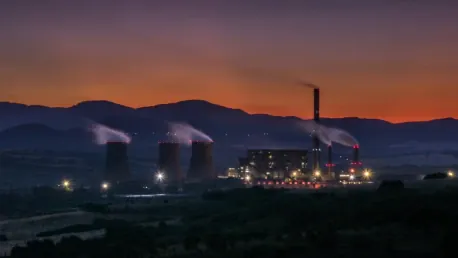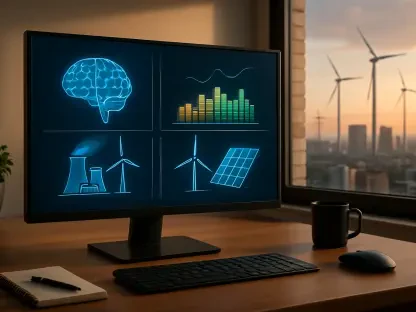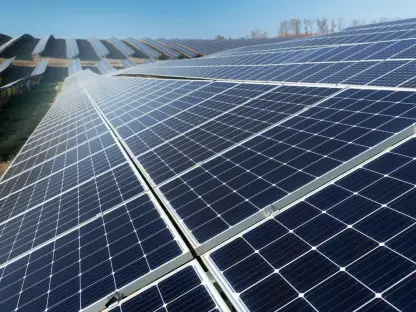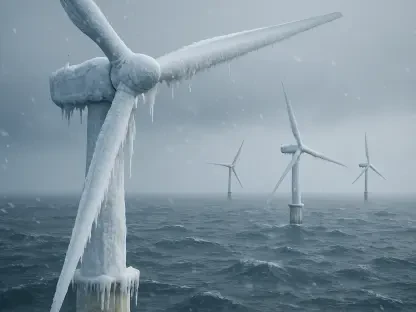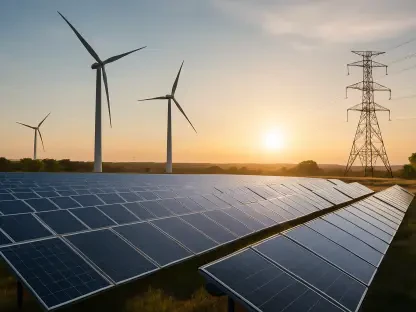Nuclear power, once hailed as the future of energy, has experienced a tumultuous journey in the United States, marked by public skepticism, financial challenges, and regulatory hurdles. Yet, with rising electricity demands spurred by the growth of data centers and AI technologies, coupled with increasing concerns over climate change, there is renewed interest in reviving this powerful energy source. This article delves into the potential resurgence of nuclear energy, examining the economic, technological, and regulatory aspects that will shape its future in the evolving American energy landscape.
The Economic Challenges of Nuclear Power
Building and maintaining nuclear reactors comes with significant financial hurdles, a reality that has historically plagued the industry. Georgia Power’s Plant Vogtle in Waynesboro serves as a prime example, taking 15 years and $35 billion—twice the initial budget—to complete. This situation isn’t an isolated case; the industry as a whole has a notorious history of cost overruns and prolonged timelines. Similarly, the Palisades Nuclear Power Plant in Michigan, which has been decommissioned, faces repair costs in the hundreds of millions, complicating its potential reopening.
Even with government support, economic uncertainties continue to loom large over the feasibility of new and existing nuclear projects. These financial obstacles critically affect the decision-making process for both private investors and governmental bodies looking to sustain and expand nuclear energy infrastructure. The question, therefore, remains whether the economic benefits of nuclear energy—such as job creation, long-term energy stability, and low operational costs—can outweigh these immediate financial burdens.
Furthermore, the industry must confront the high upfront costs and financial risks associated with nuclear energy to attract the necessary investments. The capital-intensive nature and long payback periods of nuclear projects make them less attractive compared to other forms of energy generation. Without significant improvements in cost management and efficiency, the economic hurdles could impede the broader adoption and expansion of nuclear power despite its underlying benefits.
Governmental Support and Policy Shifts
Recognizing the declining number of active nuclear plants, the federal government has rolled out several initiatives aimed at supporting the sector. Recent legislative measures underscore this commitment; the Bipartisan Infrastructure Law allocated $6 billion to preserve aging reactors, while the Inflation Reduction Act offers tax incentives and loan guarantees for new nuclear projects. These legislative steps signal a significant policy shift, aimed at sustaining and revitalizing the nation’s nuclear infrastructure.
In addition to financial incentives, the government is actively working to streamline regulatory frameworks, intending to make it easier to construct and approve new reactors. By reducing bureaucratic red tape and fast-tracking permits, these regulations aim to stimulate faster development cycles for nuclear projects. Nonetheless, governmental support alone cannot address all the challenges facing the nuclear sector. Effective implementation and oversight of these policies are crucial to ensure they genuinely benefit the industry.
Moreover, state-level initiatives also play a vital role in supporting nuclear energy. Several states are offering their own subsidies and incentives to keep existing plants operational and encourage new projects. However, aligning federal and state policies remains a significant challenge, requiring coordinated efforts to create a coherent legislative environment for the nuclear sector. Without synchronized policy frameworks, the effectiveness of these governmental support measures could be undermined, limiting their potential impact on the industry’s growth.
The Rise of Small Modular Reactors (SMRs)
One of the most promising advancements in nuclear technology is the development of Small Modular Reactors (SMRs). These reactors promise to be more cost-effective and flexible than their traditional counterparts, offering a potential solution to many of the financial and logistical challenges associated with large-scale nuclear plants. The Tennessee Valley Authority (TVA) is at the forefront of SMR advancements in the United States, leading the charge in this innovative sector.
While SMRs hold significant promise, they are not without their challenges. Current designs and the high costs associated with developing SMRs, as illustrated by projects from companies like NuScale, indicate that widespread adoption may take longer than anticipated. Critics argue that SMRs could face similar issues as large-scale reactors, including economic and logistical hurdles that have historically hampered the nuclear industry. Nonetheless, proponents see SMRs as a game-changer capable of revitalizing the nuclear sector by offering a more scalable and economically viable alternative.
Despite these concerns, SMRs represent a potential transformative force in the nuclear industry, offering an innovative solution to meet growing energy demands. Their smaller size and modular construction could enable more flexible deployment across various locations, including remote areas where traditional large reactors are impractical. Additionally, SMRs offer enhanced safety features and shorter construction times, making them an attractive option for future energy projects. However, achieving widespread adoption will require continued innovation, investment, and regulatory support to overcome the existing challenges and fully realize their potential.
Meeting Workforce and Supply Chain Demands
Revamping the nuclear sector requires more than just financial investment; it necessitates a skilled workforce and a robust supply chain. The industry faces a significant shortage of skilled labor, from engineers to safety inspectors, posing a critical challenge to its growth ambitions. The U.S. Department of Energy envisions tripling nuclear energy capacity by 2050, but this ambitious goal hinges on addressing workforce shortages and securing the necessary reactor components and uranium supplies.
Training programs and educational initiatives are critical to developing the next generation of nuclear professionals. Universities and technical schools are increasingly being called to offer specialized programs and courses in nuclear engineering, safety protocols, and reactor operation. These educational efforts aim to attract new talent to the industry, equipping them with the skills required to meet the sector’s evolving needs. Without a well-trained and adequately staffed workforce, the nuclear revival could stall, hampering the sector’s potential growth.
Additionally, a reliable supply chain is essential to support the construction and maintenance of reactors. Ensuring the availability of critical components and materials will be vital for the sector’s growth. This includes securing uranium supplies, reactor components, and specialized construction materials. The nuclear industry must establish strong relationships with suppliers and foster a resilient supply chain network to mitigate risks and ensure the steady progression of projects. By addressing these workforce and supply chain demands, the nuclear sector can position itself for sustainable long-term growth.
Safety Concerns and Public Perception
Public perception and safety remain overarching concerns for nuclear power, deeply influencing its acceptance and expansion. Historically, incidents like the Three Mile Island disaster have left a lasting impact on public trust, necessitating rigorous safety measures and transparent operations to restore confidence in nuclear energy. Modern advancements in reactor design, such as the incorporation of passive safety features, aim to mitigate risks and bolster safety protocols.
However, these innovations must be effectively communicated to the public to allay safety concerns and foster a better understanding of nuclear energy’s benefits and risks. Engaging with communities and stakeholders transparently can help bridge the trust gap, highlighting the improvements in safety standards and the environmental advantages of nuclear power. This includes open dialogues, educational campaigns, and proactive engagement with local communities where new reactors are proposed.
Furthermore, robust regulatory oversight and stringent safety protocols are essential to ensuring the safe operation of nuclear plants. The Nuclear Regulatory Commission (NRC) plays a crucial role in maintaining high safety standards and enforcing compliance with rigorous regulations. Continuous monitoring, safety inspections, and emergency preparedness drills are vital components of the industry’s safety framework. By prioritizing safety and maintaining transparent operations, the nuclear sector can work to overcome public skepticism and build a foundation of trust crucial for its revival.
The Environmental and Energy Output Benefits
Despite its challenges, nuclear power offers significant environmental benefits, making it a compelling option in the quest for sustainable and reliable energy sources. As a low-carbon energy source, nuclear power is crucial for addressing climate change and reducing greenhouse gas emissions. It provides a stable and high energy output, making it a reliable power source capable of meeting the consistent energy demands of modern industries.
Industries such as data centers and AI technologies, which require consistent and substantial energy supplies, can particularly benefit from the reliable and steady energy output provided by nuclear plants. By integrating nuclear power into the energy mix, the U.S. can reduce its reliance on fossil fuels and make strides toward achieving its climate goals while ensuring energy stability. The environmental advantages of nuclear power reinforce its potential as a key player in the transition to a more sustainable and low-carbon energy future.
Moreover, the integration of nuclear power with renewable energy sources can create a balanced and resilient energy grid. By complementing intermittent renewable sources like wind and solar with the consistent output of nuclear power, the overall stability and reliability of the energy grid can be enhanced. This hybrid approach leverages the strengths of both energy sources, providing a diversified and robust energy infrastructure capable of meeting future demands.
The Future of Nuclear Energy in the U.S.
Nuclear power, once seen as the energy technology of the future, has faced a rocky road in the United States, characterized by public doubt, financial obstacles, and stringent regulations. However, with the increasing demand for electricity driven by the expansion of data centers and artificial intelligence technologies, and mounting concerns over climate change, there’s a growing interest in nuclear energy’s comeback. In today’s evolving energy landscape, the potential revival of nuclear power is gaining attention. This resurgence could address both the soaring electricity needs and the imperative to reduce carbon emissions. The debate now revolves around the economic feasibility, technological advancements, and regulatory adjustments required to breathe new life into this powerful energy source.
Nuclear power’s capability to generate vast amounts of energy with minimal carbon footprint makes it an appealing solution. Yet, substantial investments and innovative technologies are essential to overcome previous financial and safety barriers. Additionally, modernizing regulatory frameworks will play a crucial role in supporting this resurgence.
Overall, the upswing in interest around nuclear energy reflects a desire to meet future energy demands sustainably. This article explores the various dimensions—economic, technological, and regulatory—that will determine its role in America’s energy future.
